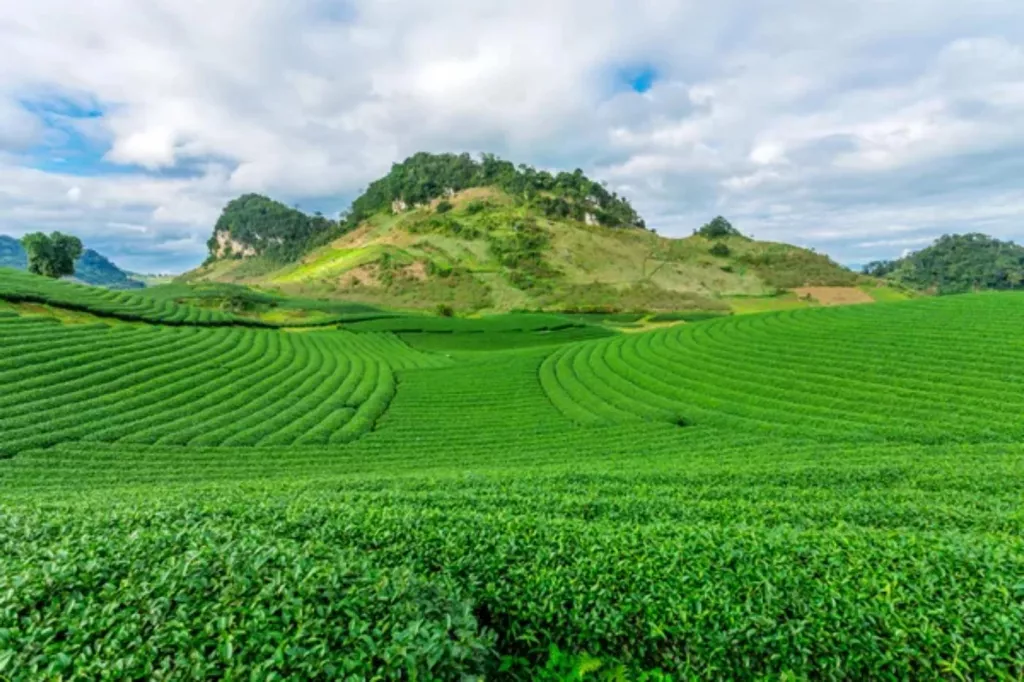Is Tea Farming Profitable? (Detailed 2024 Breakdown)
Tea farming, a centuries-old practice, has evolved into a significant global industry, especially as the demand for tea continues to grow. In 2024, the profitability of tea farming hinges on various factors such as location, scale of operation, and market trends. In this article, we'll examine the current economic landscape of tea farming, offering insights into the key elements that influence its success.
On average, startup costs for tea farms are $10,000-$15,000 per acre with a 3-5-year maturity period for tea plants. Annual profits range from $1,000-$3,000 per acre after reaching maturity. The profitability of tea farming depends on factors like location, tea variety, and scale.
But here's the twist: while some tea farmers are seeing their profits steep like a perfect cup of Earl Grey, others are facing a steep hill of challenges. Let's find out what makes the difference in the lucrative world of tea leaves.
Summary
- Tea farming can be profitable, with estimated net profits per acre ranging from $1,500 to $10,000 depending on yield and tea prices, while profit margins typically range from 15-35%.
- Selling tea also has good profit potential due to the high markups on tea products, with direct-to-consumer sales offering the highest profit margins around 30-50%.
- Aside from initial and ongoing costs, long-term investments like facilities, equipment, and research help improve and support the farm's growth, and costs for these range from $1,600-$15,000+.

On this page:
Is Growing Tea Profitable?
Estimated net profit from an acre of tea farm
Here's a simplified table estimating potential profitability:
| Revenue Factor | Estimated Range |
|---|---|
| Yield per acre | 500 – 1,000 kg |
| Sale price per kg | $3 – $10 |
| Gross revenue/acre | $1,500 – $10,000 |
| Cost Factor | Estimated Range |
|---|---|
| Total initial costs | $2,000 – $5,000/acre |
| Annual operating cost | $500 – $1,500/acre |
To calculate net profit, subtract your total annual cost from your gross revenue. If you're selling 700 kg per acre at $5 per kg, with annual costs of $1,000:
Net profit/acre = ( (700 x 5) - $1,000 ) = $2,500
Determining the profit margin for a tea farm
Let's say a small tea farm has $500,000 in annual tea sales revenue. Its annual expenses are:
-
Labor costs: $150,000
-
Equipment/supplies: $100,000
-
Land leasing: $50,000
-
Marketing: $25,000
Total expenses = $150,000 + $100,000 + $50,000 + $25,000 = $325,000 -
Net profit = Revenue - Expenses = $500,000 - $325,000 = $175,000
-
Profit margin = (Net profit / Revenue) x 100 = ($175,000 / $500,000) x 100 = 35%
Tea farming profit margins can range from 5% for wholesalers up to 43% for plantations, with most tea producers seeing 15-20% profit margins. The exact margin depends on the specific type and scale of tea farming operation.

Is Selling Tea Profitable?
Selling tea, especially high-quality tea or unique blends, has a high potential for profitability. This is due in part to the typically significant markup on tea products, which contributes to a favorable profit margin.
Exploring various revenue streams, such as direct sales, wholesale, online marketplaces, or even agrotourism elements like farm tours, can also enhance profits.
| Revenue Stream | Potential Impact | Estimated Profit |
|---|---|---|
| Direct sales | Higher profit margins due to no middleman | 30-50% margin |
| Wholesale | Larger volume but lower profit per unit | 10-20% margin |
| Online sales | Access to larger markets; logistics can be complex | 15-25% margin |
| Tours/diversification | Extra income through tourism; enhances brand visibility | 10-20% of revenue |
Market trends show that diversification into areas such as organic production or specialty teas can be particularly profitable. Keep your finger on the pulse of consumer preferences and industry shifts to capitalize on emerging opportunities.
Overall Expenses in Team Farming
| Cost Type | Estimated Range |
|---|---|
| Initial | $650 - $1,520 |
| Yearly ongoing | $1,300 - $4,470 |
| Long-term | $1,600 - $15,000+ |
Initial costs to start a tea farm
| Initial Costs | Estimated Cost Range |
|---|---|
| Soil testing | $50 - $200 |
| Soil amendments | $100 - $300 per acre |
| Tea plants | $1 - $2 per sapling |
Cost for soil preparation
Before planting any tea plants, the soil needs to be tested and amended to optimize it for growing tea. Soil testing involves analyzing the nutrient levels, pH, salinity, and other attributes.

Basic soil tests may cost around $50 while more comprehensive testing can be $200 or more. This ensures the soil will support healthy tea plant growth.
Based on the soil test results, amendments may need to be added to adjust the soil composition. Common amendments include fertilizers to add key nutrients, compost to improve organic matter, and lime to adjust the pH level.
The cost for soil amendments can range from $100 to $300 per acre depending on exactly what the soil requires. Proper soil preparation helps give the tea plants the right foundation to grow.
Planting costs
Once the soil is ready, the next step is purchasing tea plant saplings and planning out the planting. Tea plants refer to Camellia sinensis saplings purchased from a nursery. Camellia sinensis is the most well-known tea tree type.
The specific variety and size affect the cost, but tea plants typically cost $1 to $2 per sapling.
Wider plant spacing allows more room for growth but requires more land area and plants to cover the space. The planting plan should balance optimal growing conditions with land area and tea plant needs.
Ongoing costs for a tea farm
| Ongoing Costs | Estimated Cost Range |
|---|---|
| Labor | |
| Pruning | $20 - $50 per acre |
| Harvesting | $100 - $300 per acre |
| Irrigation | |
| Installation | $500 - $1,000 per acre |
| Maintenance | $30 - $70 per month |
| Fertilizers and pesticides | |
| Organic | $100 - $500 per acre |
| Chemical | $200 - $600 per acre |
| Disease and pest management | |
| Monitoring | $20 - $100 per season |
| Treatment | $150 - $500 |
-
Labor costs include expenses for pruning and harvesting the crop. Pruning costs range from $20-$50 per acre depending on the crop and labor rates. Harvesting is more intensive and costs $100-$300 per acre.
-
Irrigation requires installation of the system at $500-$1,000 per acre initially. Ongoing maintenance of the irrigation system runs $30-$70 per month.

-
Fertilizers and pesticides can be organic or chemical. Organic options range from $100-$500 per acre. Chemical fertilizers and pesticides cost $200-$600 per acre.
-
Disease and pest management involves monitoring for issues throughout the season at $20-$100 per season. If problems are identified, treatment costs $150-$500 per incident.
Long-term investment for a tea farm
| Long-Term Investment | Investment Range |
|---|---|
| Facilities | $1,000 - $10,000+ |
| Equipment | $500 - $5,000 |
| Research and sustainability | $100 - $1,000 |
Infrastructure investments include things like facilities and equipment. Facilities investments range from $1,000 to $10,000+, while equipment investments range from $500 to $5,000.
Investments in research and sustainability are focused on improving efficiency and adopting sustainable practices. These investments range from $100 to $1,000.
Critical Aspects Affecting a Tea Farm's Profitability
From the natural conditions of your farm to the ever-changing market demands, each factor plays a crucial role in the success of your tea business.
Environmental factors
-
Soil conditions: Your tea crops require acidic soil with a pH ideally between 4.5 to 5.5. The fertility of the soil, alongside its structure, can significantly affect tea growth and yield.
-
Climate conditions: Camellia sinensis, the plant from which most tea is derived, flourishes in tropical and subtropical climates. Adequate rainfall ranging from 1,800 to 2,500 mm is vital, with temperatures preferentially between 12 - 30°C.
| Climate Factor | Ideal Range |
|---|---|
| Temperature | 12 - 30°C |
| Rainfall | 1,800-2,500 mm |
| pH Level | 4.5 - 5.5 |
Market dynamics
-
Demand: The global affection for beverages like chai and Darjeeling tea influences market demand significantly. Trends in consumer preferences toward health benefits and flavor must be monitored.
-
Market trends: Revenue streams can fluctuate with changes in the beverage industry trends. Sustainability and quality are often key factors driving consumer choices.
Cultivation practices
-
Tea cultivation: Proper planting, spacing, and pruning are essential for high yield. Tea processing is also an intricate part of tea cultivation impacting quality.
-
Sustainable farming practices: Practices like drip irrigation not only conserve water but also ensure that your tea crops receive a more precise hydration amount, leading to better crops.
Managing Costs and Increasing Revenues in a Tea Farm
To make tea farming truly profitable in 2024, you need to strategically manage your costs while finding ways to increase your revenue. Let's explore how you can do that by focusing on planning, operating efficiently, and leveraging alternative revenue streams.
Plan strategically
Your success starts with strategic planning. A careful selection of tea varieties suited to your climate and soil will improve yield and thus, your profits.
High-quality tea fetches a better price on the market, balancing against the initial investment needed for quality plants and materials. Cost management in the form of detailed business models helps anticipate costs like fertilizers and irrigation, mitigating surprises that could eat into your margins.

Practice operational efficiency
Achieving operational efficiency involves everything from sustainable farming practices that reduce the need for costly inputs to employing technology for monitoring pests and diseases.
The scale of operation is also a factor — larger operations can dilute fixed costs over more units of output. Consider the labor cost and how mechanization could potentially reduce those expenses.
- Labor cost savings: 10-25%
- Increase in efficiency with technology: up to 20%
Efficient irrigation systems and appropriate fertilizer use not only cut costs but are also beneficial for sustainable farming, reducing the environmental footprint of your operations.
Agritourism and alternative revenue
Embracing agritourism and hosting workshops on your farm can open new revenue streams that complement your core business income. For example, tea tours and marketing your farm as a destination can translate into significant additional profit margins.
- Average revenue from tours and workshops (per week): $1,000 - $3,000
Keep an eye on market trends to ensure that your agritourism offerings stay fresh and appealing.
How Much Do Tea Farmers Get Paid?
Initial earnings for small-scale farmers
Individual small-scale farmers may receive a payout ranging from a few cents to several dollars per kilogram of tea leaves, depending on the quality, quantity, and market prices at the time of sale.
To get more ideas on how to make money as a small-scale farmer, this article has some useful tips for you.
Income for commercial growers
If you happen to manage a larger, commercial tea farm, your income would generally be higher. You could potentially earn upwards of several thousand dollars annually, especially if you have efficient production and processing systems in place.
Payment frequency
Payments to tea farmers are typically made after the harvest, which can be either:
- Bi-annual: harvests occurring twice a year
- Annual: one major harvest per year
Profit from different tea types
- Black tea: $1.50 - $3.00/kg
- Green tea: $2.00 - $4.00/kg
Expenses to consider
Your net income will depend significantly on the costs of production, which include:
- Labor
- Fertilizers
- Equipment maintenance
Calculation of net profit and profit margin
Assume you sell 1,000 kg of black tea at $2.00/kg:
- Total revenue: $2,000
- Total costs: $1,200
Net profit: $800
Profit margin (%) = (Net profit / Total revenue) x 100 = (800 / 2000) x 100 = 40%


